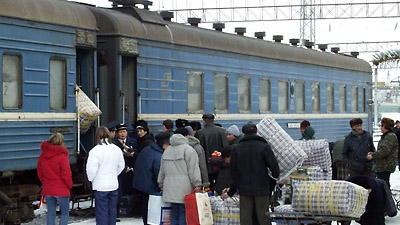Migration is about people - this could have been the motto for the recent annual conference of the MIRPAL (Migration and Remittance Peer Assisted Learning) network.
The conference was held in St. Petersburg in the Russian Federation, within the World Bank’s regional migration program in Europe and Central Asia (ECA). A wide and strong community of experts and practitioners from nine CIS countries exchanged their knowledge, skills and views on the challenges that come with migration, which are critical for countries to address right now.
MIRPAL is a community of migration and remittance practitioners and policymakers from ECA countries. This peer-learning network was officially launched in May 2010 at a conference in Moscow. A series of learning events organized prior to the May 2010 launching conference served as a foundation for the development of the network.
Many countries in the region have experienced increasing inflows from migrant worker remittances over the past several years. Economic growth – as well as poverty reduction achievements - in most of these countries has been intertwined with migration and remittance trends. The Bank has undertaken the challenge of helping countries throughout the region cope with ongoing issues associated with migration and remittances through both lending initiatives and migration policy improvement.
This year, discussions revolved around economic and social aspects of migrant people’s integration.
To begin with, labor migration was discussed jointly by economists and anthropologists for the first time at the conference, thanks to contributions from the European University at St. Petersburg. The purpose was to get a comprehensive picture of the integration motivations of labor migrants in Russia. On one hand, migrants are willing to improve their wellbeing in terms of the level of income, while on the other, the time spent in a destination country reshapes their individual life experience, often affecting their social status.

